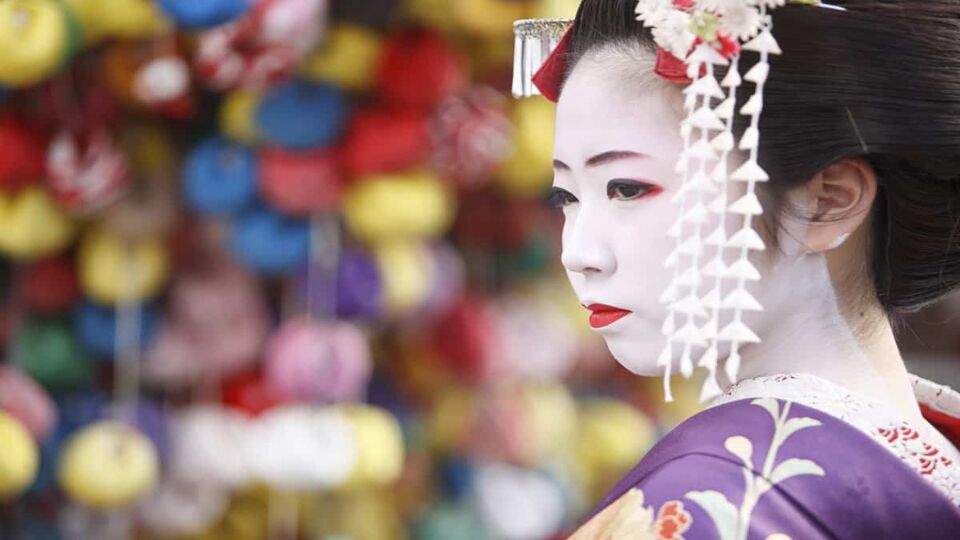Tokyo
Price ¥22,000
Min age 0
Rating 4.92 / 5 [3235 ratings]
Tour supplied by:
Bucket list destination:
Kyoto, Kansai, Japan

No longer Japan’s capital, but still very much the country’s traditional heart, Kyoto wears its past with pride.
More than 1,000 years as Japan’s political, spiritual and cultural centre have left an incredible legacy of World Heritage temples, shrines and palaces.
Shop for traditional crafts, splurge on the most sublime Japanese cuisine, stroll in pristinely-manicured gardens and spend the night at a historic inn. You might even spot an enigmatic geisha or two. Kyoto is where old Japan still lives and breathes.
The central transport hub, in the southern half of the city, is Kyoto Station.
North of there, the main downtown area is centred on Shjio-dori avenue – full of places to shop, eat and drink, and within easy reach of many of the top sights.
East, on the other side of the Kamo River, is Higashiyama, a sprawling area packed with historic sights. All these areas are well connected.
The northwest is a bit of a slog, but is home to several of Kyoto’s star temples, while out west, Arashiyama is another major sightseeing area, most famous for its bamboo grove.
Our selection of the best Viator tours of this destination, plus helpful tickets and transfers
Tokyo
Price ¥22,000
Min age 0
Rating 4.92 / 5 [3235 ratings]
Tour supplied by:
Tokyo
Price ¥24,000
Min age 0
Rating 4.91 / 5 [1378 ratings]
Tour supplied by:
Asakusa
Price ¥6,000
Min age 0
Rating 4.96 / 5 [1377 ratings]
Tour supplied by:
Tokyo
Price ¥15,000
Min age 12
Rating 4.97 / 5 [1169 ratings]
Tour supplied by:
Tokyo
Price $75
Min age 0
Rating 4.96 / 5 [1004 ratings]
Tour supplied by:
The New Year (Dec 28-Jan 4), Golden Week (April 29-May 5) and Obon (Aug 13-15) holidays are all worth avoiding – things either close, get packed out, or suddenly cost significantly more.
Instead, think of spring or autumn. Late March to early April sees the cherry blossoms, which means more visitors, but it’s a beautiful time to see the city and the weather remains generally warm and sunny in April and May.
Likewise, October and November have great weather for being out and about. If possible, avoid July and August – the heat and humidity are brutal.
The nearest major international airport is Kansai International Airport (KIX), which is a bit of a trek – 80 minutes on the Haruka Kansai-Airport Express train.
If, however, you transfer at Narita (serving Toyo) or elsewhere, you might arrive at Osaka International Airport (Itami). Take a 50-minute limousine bus from there to Kyoto.
If coming after staying in Tokyo, the shinkansen (bullet train) is by far the best option.
Kyoto has an extensive public transportation network, with trains and subways being the best way to get around quickly.
If somewhere isn’t close to a station, it will be close to a bus stop, and with a day pass buses are a very cheap way to get about, if you don’t mind the slow-moving traffic.
If you are in a group, taxis can be as wallet-friendly as the buses, and can be found near most major sights. Then there’s cycling – it’s fairly safe and easy to get around on a bike, and there are plenty of rental shops.
The area around Kyoto Station, the main transport hub, is great for accessing central and further away areas, but it does feel rather sterile.
The downtown area around Shoji-dori is also super convenient for the sights and wining and dining.
Southern Higashiyama has lovely old areas like Gion to stay in and explore, while also being very close to downtown and having many major sights.
In the west, Arashiyama is too far removed to be a practical sightseeing base for all of Kyoto, but it can be great if you fancy a couple of days closer to nature.
There are good restaurants all over Kyoto, but some areas are especially good hunting grounds.
North of Shijo-dori, Pontocho is an atmospheric alley parallel to the Kamo River that’s packed with restaurants and bars.
A short walk away, Kiyamachi-dori is similarly pretty, with dozens of bars and restaurants, at various price points, running alongside a small canal.
The old Gion area is known for excellent kaiseki-ryori restaurants.
The area around and under Kyoto Station has all sorts of stores, from tacky souvenir vendors to home electronics megastores.
Shijo-dori and the downtown area has major department stores and the wonderful Nishiki food market – not just good for food, but for teas, handcrafted knives and kitchenware.
For textiles, head to the Nishijin neighbourhood. If you’re after ceramics, the streets leading to Kiyomizu Temple are excellent.
For a vast range of crafts in one place, Kyoto Handicraft Center near Heian Shrine is superb. Shinmonzen and Furumonzen streets in Gion.
London, United Kingdom (UK)
Well-regarded tour operator specialising in small group and private/bespoke tours to the undiscovered parts of Japan. They’re renowned for cultural & hiking tours that take the ‘lesser known path’, avoiding the crowds, but still take in the main sights.